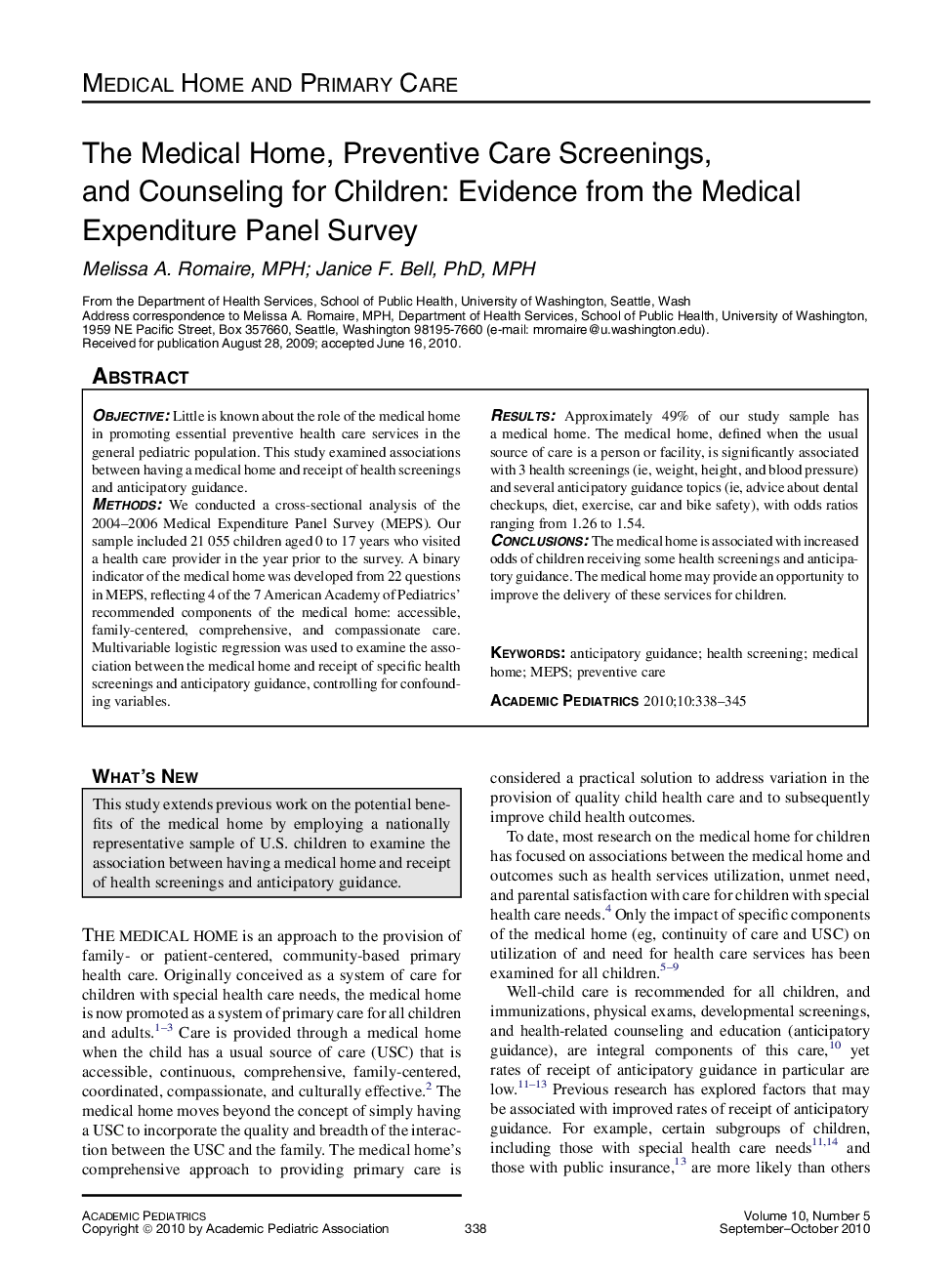| Article ID | Journal | Published Year | Pages | File Type |
|---|---|---|---|---|
| 4140033 | Academic Pediatrics | 2010 | 8 Pages |
ObjectiveLittle is known about the role of the medical home in promoting essential preventive health care services in the general pediatric population. This study examined associations between having a medical home and receipt of health screenings and anticipatory guidance.MethodsWe conducted a cross-sectional analysis of the 2004–2006 Medical Expenditure Panel Survey (MEPS). Our sample included 21 055 children aged 0 to 17 years who visited a health care provider in the year prior to the survey. A binary indicator of the medical home was developed from 22 questions in MEPS, reflecting 4 of the 7 American Academy of Pediatrics' recommended components of the medical home: accessible, family-centered, comprehensive, and compassionate care. Multivariable logistic regression was used to examine the association between the medical home and receipt of specific health screenings and anticipatory guidance, controlling for confounding variables.ResultsApproximately 49% of our study sample has a medical home. The medical home, defined when the usual source of care is a person or facility, is significantly associated with 3 health screenings (ie, weight, height, and blood pressure) and several anticipatory guidance topics (ie, advice about dental checkups, diet, exercise, car and bike safety), with odds ratios ranging from 1.26 to 1.54.ConclusionsThe medical home is associated with increased odds of children receiving some health screenings and anticipatory guidance. The medical home may provide an opportunity to improve the delivery of these services for children.
